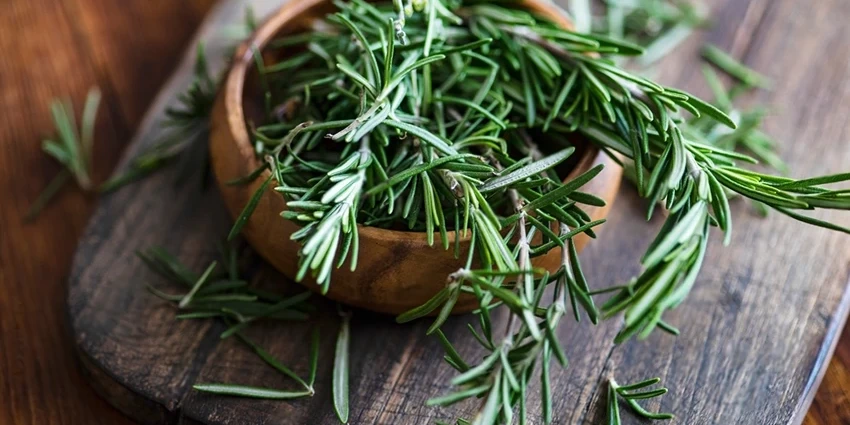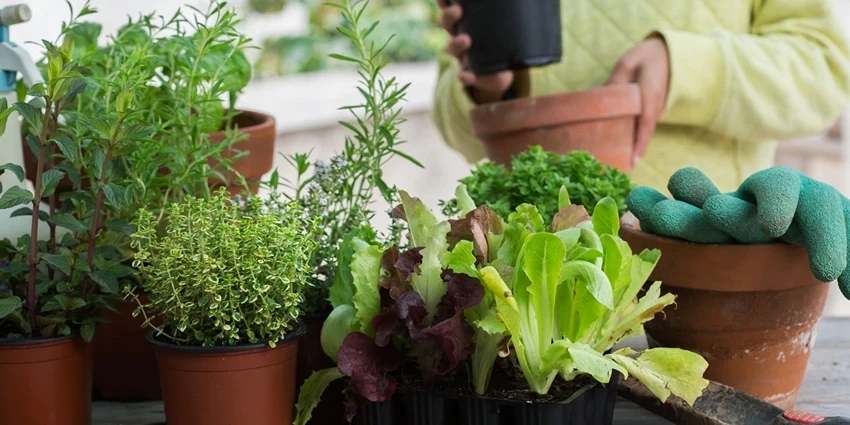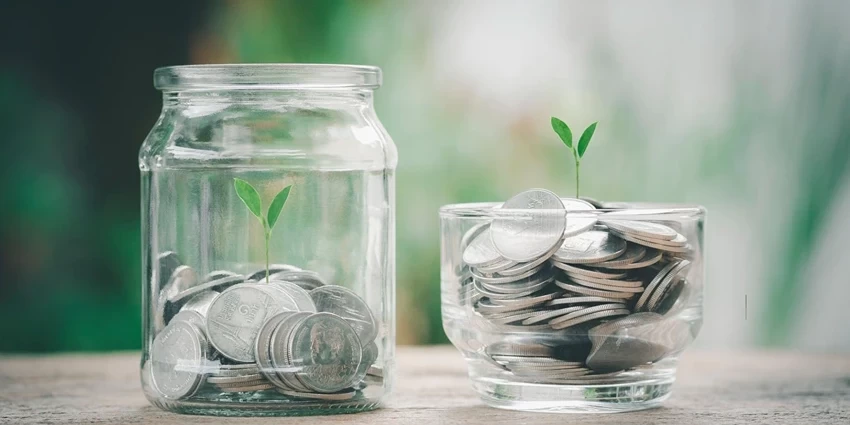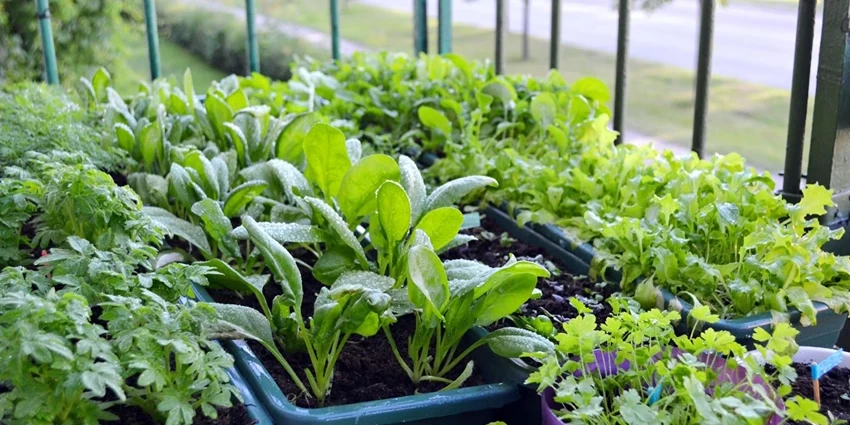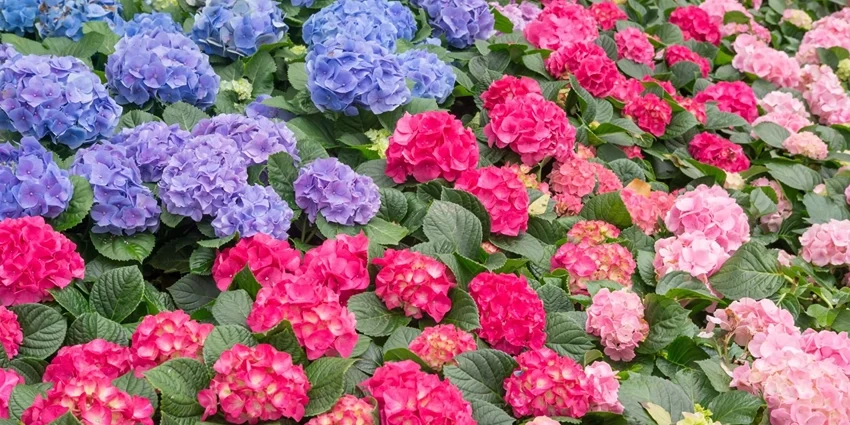All products were chosen independently by our editorial team. This review contains affiliate links and we may receive a commission for purchases made. Please read our affiliates FAQ page to find out more.
Home » Gardening Methods » Herb Gardening Tools
Gardening in the city may not come with sprawling yards or vast plots of land, but that doesn’t mean you can’t cultivate your own lush vegetable garden or a vibrant array of herbs. Whether you’re working with a balcony, a rooftop, or just a sunny window, the right tools and a bit of know-how can transform your urban space into a green sanctuary.
Register for our latest in-depth reviews and product round-ups from the experts.
Enter your email address below to receive our monthly review emails.
By entering your details, you are agreeing to our terms and conditions and privacy policy. You can unsubscribe at any time.
The Rise of Urban Gardening
In the heart of the city, amidst the concrete and the hustle, lies the potential for growth—not just for ourselves but for the plants we nurture. Urban gardening has become a beacon of tranquility and self-sufficiency, a way to reconnect with nature and take control of what we consume. It’s a movement that’s gaining momentum, as city dwellers seek out ways to grow their own food and flowers, despite the limitations of space.

Selecting the Right Containers
When it comes to urban gardening, the container is king. The right container can mean the difference between a thriving garden and a struggling one. Here’s what to consider:
- Size Matters: Opt for larger containers to reduce the frequency of watering and to give your plants ample room to grow.
- Weight: Remember, once filled, containers can be heavy. Consider this if you’ll need to move them.
- Material: From traditional terracotta to modern fabric pots, choose a material that fits your aesthetic and functional needs.
- Depth: Ensure the container is deep enough for the plant’s roots. A shallow pot stunts growth, while a deep one encourages it.
Container Depth Guide
| Plant Type | Minimum Soil Depth |
| Herbs | 4-5 inches |
| Greens | 6-7 inches |
| Root Vegetables | 8-9 inches |
| Larger Vegetables | 10-12 inches |
Tools for the Urban Gardener
With space at a premium, every tool must earn its place in the urban gardener’s arsenal. Here are some essentials:
- Trowel: For planting and moving soil.
- Pruning Shears: To keep plants in shape and harvest your veggies.
- Watering Can: With a long spout for precision watering.
- Gloves: To protect your hands from soil and thorns.
The Art of Plant Selection
Choosing the right plants for your urban garden is an art. Consider the following:
- Sunlight: Most vegetables need at least six hours of sunlight per day.
- Wind: A sheltered spot protects plants from harsh winds.
- Companions: Some plants grow better together. For instance, tomatoes thrive with basil.
Soil and Fertilizer: The Foundation of Growth
The right soil mix is the foundation of any garden. For container gardening, avoid garden soil and opt for a high-quality potting mix that ensures good drainage and aeration. Fertilization is also key, as container plants have limited access to natural soil nutrients.
Soil Composition Table
| Component | Purpose |
| Potting Mix | Provides aeration and moisture retention |
| Organic Fertilizer | Supplies essential nutrients |
| Compost | Enriches the soil |
For the best compost bins, read our detailed article here.
Watering: The Lifeline of Your Garden
Consistent watering is crucial. Inconsistent moisture can lead to a host of problems, from blossom drop to insect infestations. Consider a self-watering planter to simplify this task and ensure your plants receive a steady supply of water.
The Best Vegetables for Containers
Not all vegetables are suited for container life. Here are some that thrive:
- Tomatoes: Choose bush or cherry varieties for best results.
- Greens: Lettuce, spinach, and chard are excellent for containers.
- Herbs: Most herbs do well in pots, especially basil, thyme, and parsley.
Companion Planting: Maximizing Space and Compatibility
Companion planting can enhance plant growth and deter pests. Here’s a quick guide:
- Good Companions: Beans with carrots, tomatoes with basil.
- Combinations to Avoid: Beans with onions, carrots with dill.
Nurturing Your Urban Oasis
Creating an urban garden is more than just a hobby; it’s a lifestyle. It’s about making the most of what you have, finding beauty in the small things, and nurturing life amidst the urban jungle. With the right tools and knowledge, your balcony or rooftop can become a source of pride and produce. It’s about getting your hands dirty, breathing life into seeds, and watching as your garden grows—just like the city around you.

The Personal Touch in Urban Gardening
Every urban garden tells a story. It’s a reflection of the gardener’s personality and creativity. Whether it’s a single pot of herbs on a windowsill or an array of containers on a rooftop, each plant is a testament to the gardener’s care and dedication. It’s a personal journey, one that brings the natural world into our daily lives, offering a respite from the fast-paced urban environment.
Embracing the Urban Gardening Community
Urban gardening isn’t just about individual efforts; it’s about community. In cities around the world, people are coming together to share tips, seeds, and stories. Community gardens are sprouting up, offering spaces for people to grow together. It’s a movement that’s about more than just plants; it’s about people, connections, and the shared experience of creating something green and good.
The Rewards of Urban Gardening
The rewards of urban gardening are many. There’s the satisfaction of eating food you’ve grown yourself, the joy of seeing your plants flourish, and the peace that comes from tending to them. It’s a way to slow down, to appreciate the cycles of nature, and to make a tangible connection to the earth. In the midst of the city, an urban garden is a sanctuary, a place of growth and life.
Advanced Tools for the Urban Green Thumb
While the basics can get you started, advanced tools can take your urban garden to the next level. These tools can help you monitor the health of your plants, automate care, and even improve yields.
Precision Watering Systems
In an urban garden, every drop counts. Precision watering systems, such as drip irrigation or self-watering containers, can save water and time.
Watering System Comparison
| System Type | Pros | Cons |
| Drip Irrigation | Efficient, reduces waste | Initial setup complexity |
| Self-Watering Containers | Consistent moisture | Limited to container size |
| Watering Globes | Decorative, functional | Requires refilling, limited capacity |
Monitoring and Testing Tools
Keeping an eye on the health of your soil and plants can prevent problems before they start. Tools like moisture meters, pH testers, and temperature sensors can give you real-time data to make informed decisions.
Plant Health Monitoring Table
| Tool | Function | Benefit |
| Moisture Meter | Measures soil moisture | Prevents over/under-watering |
| pH Tester | Tests soil acidity/alkalinity | Ensures optimal soil conditions |
| Temperature Sensor | Monitors air/soil temperature | Protects against extreme temps |
Pest Control: The Organic Way
Pests can be a particular challenge in the confined spaces of an urban garden. Organic pest control methods, such as neem oil, insecticidal soaps, and companion planting, can help keep your garden healthy without the use of harsh chemicals.
Organic Pest Control Options
| Method | Target Pest | Application |
| Neem Oil | General insecticide | Spray on affected areas |
| Insecticidal Soap | Soft-bodied insects | Direct spray |
| Companion Planting | Various pests | Strategic plant placement |

The Art of Container Vegetable Gardening
Container vegetable gardening is a symphony of variables working in harmony. From the selection of containers to the balance of nutrients, each element plays a crucial role in the garden’s performance.
Nutrient Management in Containers
Nutrients are quickly depleted in container gardens. A regular feeding schedule with organic fertilizers can keep your vegetables growing strong.
Fertilizer Schedule Table
| Fertilizer Type | Frequency | Notes |
| Liquid Organic | Every 2-4 weeks | Apply during watering |
| Slow-Release Granules | Once a season | Mix into the soil |
| Compost | As needed | Top-dress or mix into soil |
Seasonal Planting Guide
Understanding the seasons is key to a productive container garden. Some vegetables prefer the cool days of spring or fall, while others thrive in the heat of summer.
Seasonal Planting Table
| Season | Ideal Crops |
| Spring | Lettuce, peas, radishes |
| Summer | Tomatoes, peppers, cucumbers |
| Fall | Kale, carrots, beets |
Climate Considerations for Container Gardening
The microclimate of your urban space can vary significantly from the surrounding area. Wind, sunlight, and even wall reflectivity can affect how plants grow.
Microclimate Factors Table
| Factor | Consideration | Impact |
| Wind | Sheltering plants | Reduces dehydration |
| Sunlight | Positioning containers | Maximizes photosynthesis |
| Reflectivity | Using walls wisely | Can increase light exposure |
Frequently Asked Questions
The best containers for herb gardening are those that provide adequate drainage and space for the herbs to grow. Materials can vary from plastic to terracotta, but ensure they are food-safe if you’re growing edible herbs.
Watering frequency depends on the type of vegetables, the size of the container, and the weather conditions. A general rule is to water when the top inch of soil feels dry to the touch.
The most essential tools for starting an herb garden include a trowel for planting, pruning shears for harvesting, and a watering can for maintaining moisture.
In most climates, growing vegetables in containers all year round is possible with the right selection of crops and protection from extreme temperatures. Cool-season crops can extend the growing season into the cooler months.
A passionate plant enthusiast on a mission to turn every space into a blooming haven. With a love for all things botanical, I'm your gardening guide, sharing quick tips, the joy of nurturing plants, and the belief that every day is a great day to garden. Join me in cultivating a thriving garden paradise—we'll sow, grow, and flourish together in this green revolution!



